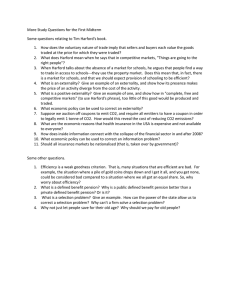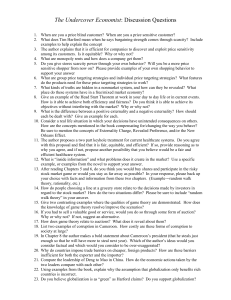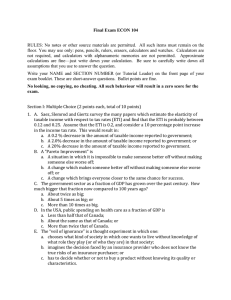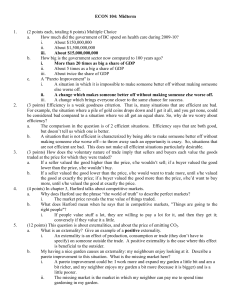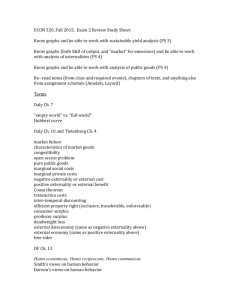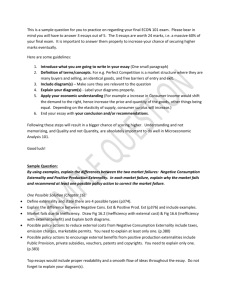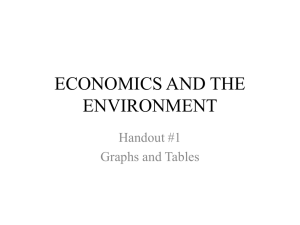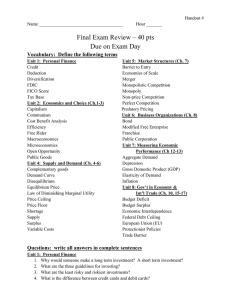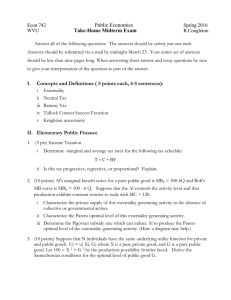ECON 104: Midterm
advertisement
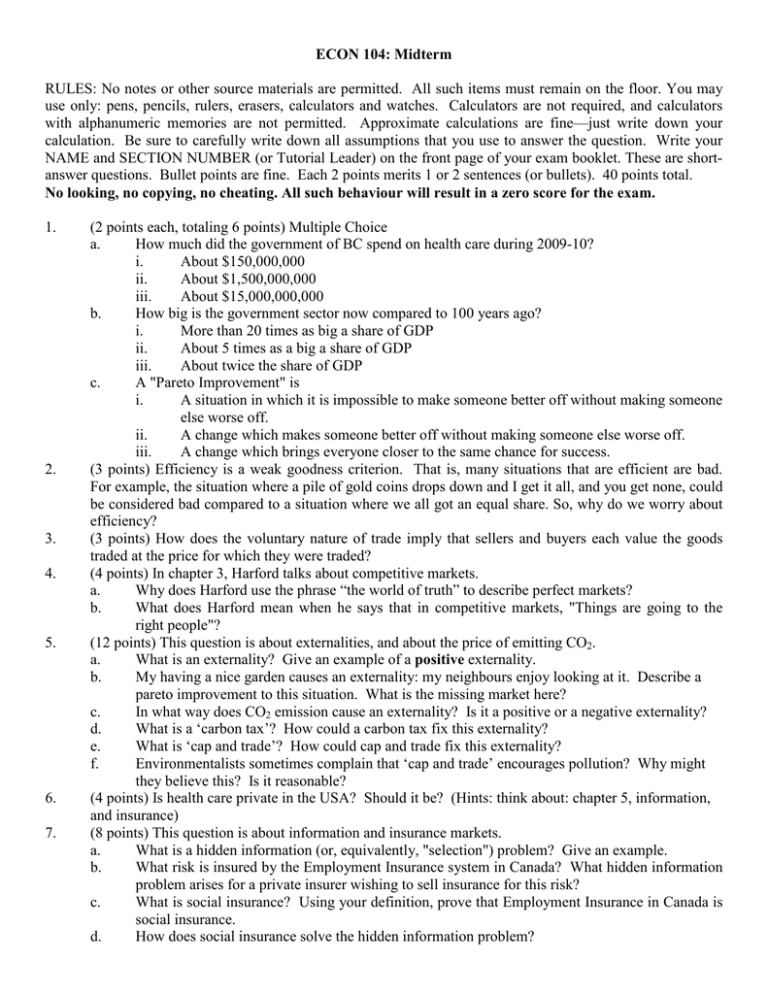
ECON 104: Midterm RULES: No notes or other source materials are permitted. All such items must remain on the floor. You may use only: pens, pencils, rulers, erasers, calculators and watches. Calculators are not required, and calculators with alphanumeric memories are not permitted. Approximate calculations are fine—just write down your calculation. Be sure to carefully write down all assumptions that you use to answer the question. Write your NAME and SECTION NUMBER (or Tutorial Leader) on the front page of your exam booklet. These are shortanswer questions. Bullet points are fine. Each 2 points merits 1 or 2 sentences (or bullets). 40 points total. No looking, no copying, no cheating. All such behaviour will result in a zero score for the exam. 1. 2. 3. 4. 5. 6. 7. (2 points each, totaling 6 points) Multiple Choice a. How much did the government of BC spend on health care during 2009-10? i. About $150,000,000 ii. About $1,500,000,000 iii. About $15,000,000,000 b. How big is the government sector now compared to 100 years ago? i. More than 20 times as big a share of GDP ii. About 5 times as a big a share of GDP iii. About twice the share of GDP c. A "Pareto Improvement" is i. A situation in which it is impossible to make someone better off without making someone else worse off. ii. A change which makes someone better off without making someone else worse off. iii. A change which brings everyone closer to the same chance for success. (3 points) Efficiency is a weak goodness criterion. That is, many situations that are efficient are bad. For example, the situation where a pile of gold coins drops down and I get it all, and you get none, could be considered bad compared to a situation where we all got an equal share. So, why do we worry about efficiency? (3 points) How does the voluntary nature of trade imply that sellers and buyers each value the goods traded at the price for which they were traded? (4 points) In chapter 3, Harford talks about competitive markets. a. Why does Harford use the phrase “the world of truth” to describe perfect markets? b. What does Harford mean when he says that in competitive markets, "Things are going to the right people"? (12 points) This question is about externalities, and about the price of emitting CO2. a. What is an externality? Give an example of a positive externality. b. My having a nice garden causes an externality: my neighbours enjoy looking at it. Describe a pareto improvement to this situation. What is the missing market here? c. In what way does CO2 emission cause an externality? Is it a positive or a negative externality? d. What is a ‘carbon tax’? How could a carbon tax fix this externality? e. What is ‘cap and trade’? How could cap and trade fix this externality? f. Environmentalists sometimes complain that ‘cap and trade’ encourages pollution? Why might they believe this? Is it reasonable? (4 points) Is health care private in the USA? Should it be? (Hints: think about: chapter 5, information, and insurance) (8 points) This question is about information and insurance markets. a. What is a hidden information (or, equivalently, "selection") problem? Give an example. b. What risk is insured by the Employment Insurance system in Canada? What hidden information problem arises for a private insurer wishing to sell insurance for this risk? c. What is social insurance? Using your definition, prove that Employment Insurance in Canada is social insurance. d. How does social insurance solve the hidden information problem?
